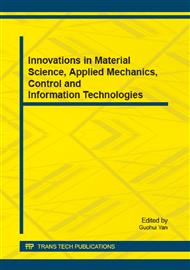p.3
p.9
p.15
p.19
p.25
p.31
p.37
p.47
p.53
Study on the Properties of Compressed Bricks Using Cameron Highlands Reservoir Sediment as Primary Material
Abstract:
This research is to investigate the properties of compressed building bricks producedfrom Cameron Highlands reservoir sediment. The particle size distribution of the sediments are graded as silt and sand. The sediments used were as total replacement of the normal soils used in the compressed soil bricks. This paper presents the compilation of experimental brick properties; compressive strength, water absorption, microstructure and heavy metal leachingof the compressed sediment bricks. The experimental results shows that increasing use of reservoir sediments decrease the compressive strength andincrease the water absorption. The heavy metal concentrations of the leachates from the leaching test are all within the regulatory limits. The optimum mix is derives from the compressive strength and the water absorption in which in this research is Mix 4, 70% sedimenta, 20% sedimentb and 10% cement,complying with ASTM C129 – Non Load Bearing Bricks [1].
Info:
Periodical:
Pages:
25-29
Citation:
Online since:
January 2015
Keywords:
Price:
Сopyright:
© 2015 Trans Tech Publications Ltd. All Rights Reserved
Share:
Citation:


